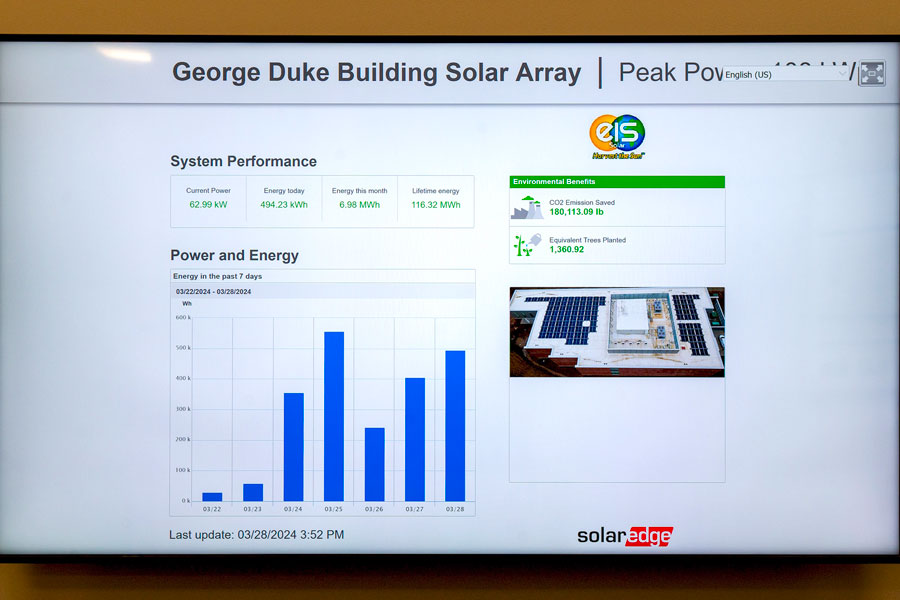Report says campus making progress reducing carbon
Solar panels added since study will reduce emissions more

An initial greenhouse gas inventory performed by the University of Pittsburgh shows that its Bradford campus has made progress in limiting the amount of carbon dioxide it contributes to the atmosphere.
The report, which was conducted by Pitt’s Office of Sustainability, tracked emissions for fiscal years 2019 and 2022, neither of which was affected by the COVID-19 pandemic lockdown. The study estimates emissions from vehicles, electricity production and consumption, natural gas used for buildings, and more. It also looked at chemicals used in refrigerants and fertilizer as well as emissions related to commuting, university-sponsored travel, study abroad, solid waste, wastewater and paper usage.
The study examined two separate years to create both a baseline and to measure the university’s progress toward a goal of zero carbon emissions by 2037.
During 2019 and 2022, the Bradford campus’s emissions dropped 6.7%. During the 2022 fiscal year, Pitt-Bradford produced 6.17 metric tons of carbon dioxide per full-time equivalent student. Nationwide, Americans produced 14.9 metric tons of carbon dioxide per person, according to the University of Oxford.
The report made recommendations to reduce Pitt-Bradford’s carbon footprint further. Some of those recommendations are already being undertaken by the campus.
Jack Rae, director of facilities at the Bradford campus, said that as buildings are renovated, sustainability and efficiency features and practices are incorporated. The largest areas of emissions on the campus come from purchased electricity and natural gas used to heat buildings and water.
This summer, for example, the Frame-Westerberg Commons received new heating, ventilation and air conditioning systems with more efficient motors. Additionally, a large ceiling fan installed in the vaulted ceiling of the KOA Dining Hall will push warm air from the ceiling downward during the winter.
Bathroom remodeling in two of the university’s residence halls this summer included replacing plumbing with low-flow fixtures to reduce the amount of water consumed. LED lights with timers replaced fluorescent lights to use less energy.
As items such as fluorescent bulbs and batteries are replaced across the university, they are recycled. Metal from used furniture and waste oil used by the university’s trucks and landscaping equipment are also recycled. Although a small part of the campus’s carbon footprint, responsibly using and recycling resources is an important aspect of Pitt-Bradford’s operations, according to Dr. Aurora Sharrard, assistant vice chancellor for sustainability at the University of Pittsburgh.
Rae said that the campus is beginning to replace some of its landscaping equipment with electric models, which also help reduce noise. Pitt-Bradford is also exploring adding electric trucks to its fleet.
The report also recommended that the university pursue clean on-site electricity production in addition to the rooftop solar arrays on the George B. Duke Engineering and Information Technologies Building and the Richard E. and Ruth McDowell Sport and Fitness Center. The Duke solar array began producing electricity in the 2023 fiscal year, so it is not reflected in the study.
Examining opportunities for more sustainable energy production is one of the tasks of Pitt-Bradford’s Sustainability Committee, led by Dr. Matt Kropf, associate professor of engineering technology, and Dr. Julia Morgan, assistant professor of philosophy. The committee is working with Rae and the university-wide Office of Sustainability to create Pitt-Bradford’s first plan to increase the campus’s sustainability in both the long and short term.
The Office of Sustainability plans to re-measure Pitt-Bradford’s campus emissions every three years.
--30--